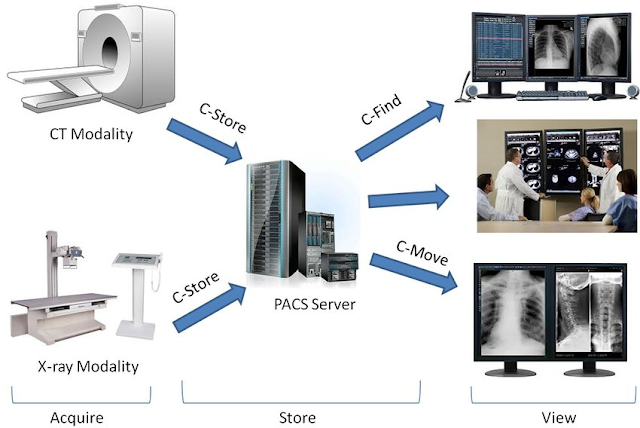Implementing Medical Image Archiving Software A Guide to Long-Term Data Preservation
Your medical imaging storage infrastructure is the backbone of your healthcare facility’s diagnostic capabilities.
With medical imaging storage solutions handling
ever-growing data volumes, knowing when to upgrade is critical.
Outdated systems can slow down workflows,
compromise patient care, and inflate costs.
This article explains the signs it’s time to upgrade, backed by facts and simple guidance to help you make informed decisions.
Why Upgrading Your Storage Matters
Upgrading your storage isn’t just about keeping
up with technology—it’s about ensuring your facility runs smoothly.
Modern imaging
systems, like MRI and CT scanners, produce massive files.
For example, a single CT scan can generate up to
1 GB of data. If your storage can’t handle this, you risk delays in accessing
images, which can frustrate doctors and patients alike.
Below, we’ll explore key indicators that your
system needs a refresh.
Sign
1: Slow Access to Images
If your radiologists are waiting too long for
images to load, it’s a red flag. Slow
access times can disrupt workflows and delay diagnoses.
Studies show that 80% of healthcare providers
report inefficiencies due to outdated storage systems.
A modern solution, like cloud-based storage, can
cut access times significantly, often to under a second.
If your system lags, it’s time to consider an
upgrade to keep your team moving efficiently.
Sign
2: Running Out of Storage Space
Are you constantly deleting old images to free up
space? This is a clear sign your storage is outdated.
According to
industry reports, medical imaging data is growing at a rate of 20-40% annually.
If your current setup can’t scale to meet this
demand, you’re risking data loss or costly workarounds. Upgrading to scalable
solutions, like hybrid or cloud storage, ensures you never run out of room.
Sign
3: High Maintenance Costs
Older storage systems often require frequent
repairs and updates, draining your budget.
Maintenance costs for legacy
systems can be 15-20% higher than for modern setups.
If you’re spending more on keeping your system
alive than on patient care, it’s a sign to invest in a new infrastructure.
Newer systems are designed for reliability,
reducing downtime and saving you money in the long run.
Key Factors to Consider When Upgrading Medical Imaging Storage Solutions
When planning an upgrade, focus on solutions that
meet your facility’s needs.
Scalability is crucial—your
storage should grow with your data. Security is another priority, as medical
images are sensitive.
Look for systems compliant with HIPAA regulations,
which protect patient data. Finally, consider ease of integration.
Your new storage should work seamlessly with
existing imaging devices to avoid disruptions.
|
Factor |
Why It Matters |
|
Scalability |
Ensures your storage can handle increasing data volumes without
frequent upgrades. |
|
Security |
Protects patient data and ensures compliance with regulations like
HIPAA. |
|
Integration |
Allows smooth operation with existing imaging systems, reducing
setup time. |
When to Act: Timing Your Upgrade
Timing your upgrade is just as important as
recognizing the need for one. Don’t wait
for a system crash—that can lead to data loss and costly downtime.
Instead, plan your upgrade when you notice early
warning signs, like those mentioned above.
A good rule of thumb is to review your storage
every 3-5 years, as technology evolves quickly.
For example, cloud storage adoption in healthcare
has risen by 70% since 2020, offering flexibility and cost savings.
If your facility is expanding or adopting new
imaging tech, that’s another cue to upgrade.
Newer modalities, like 3D mammography, produce
larger files than older systems, so your storage must keep up.
By acting proactively, you avoid bottlenecks and
ensure your team can focus on patient care.
How to Choose the Right Solution?
Choosing the right storage solution can feel
overwhelming, but it doesn’t have to be.
Start by assessing your current data volume and
growth rate. A small clinic might
need 10 TB of storage, while a large hospital could require 100 TB or more.
Next, decide between on-premises, cloud, or
hybrid storage. Cloud solutions are popular for their flexibility, with 60% of
healthcare organizations using them, per recent surveys.
However, hybrid systems offer a balance of local
control and cloud scalability.
Engage your IT team and radiologists in the
decision. Their input ensures the solution fits your workflow.
Finally, work with a trusted vendor who understands healthcare needs. A reliable vendor will guide you through implementation and provide ongoing support.
Final Thoughts
Upgrading your medical imaging storage
infrastructure isn’t just a technical decision—it’s a step toward better
patient care.
By watching for signs like slow access, limited
space, or high costs, you can act before problems escalate.
With modern
storage solutions, you’ll improve efficiency, save money, and keep your
data secure.
Review your system today and take the first step toward a future-proof infrastructure that supports your facility’s growth.





Comments
Post a Comment